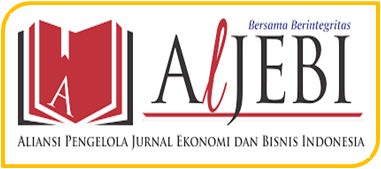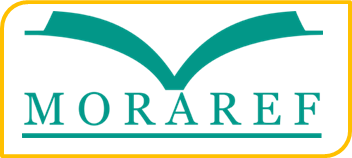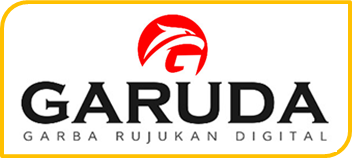The Comparative Analysis of Islamic and Conventional Monetary Financial System
Abstract
This article aims to analyze the uniqueness of Islamic financial instruments compared to conventional financial instruments and to find out what distinguishes the Islamic monetary framework from the standard monetary framework. The advantages and disadvantages of Islamic and traditional monetary frameworks are also discussed in this paper. This paper uses a writing concentrate approach by collecting information from the analytical writing in question. The side effects of the review suggest that the Islamic Monetary Framework is developing rapidly, playing its part in allocating assets and working on the turn of financial events, and implementing Islamic banking. The results also show that the advantages of Islamic finance can survive despite different monetary emergencies. The progress of Indonesian Islamic Banking evidences it compared to traditional banks.
Keywords
Full Text:
PDFReferences
Askari, H., Iqbal, Z., & Mirakhor, A. (2014). Understanding Development in an Islamic Framework. Islamic Economic Studies, 22(1), 1–36. https://doi.org/10.12816/0004129
Chamid, N. (2013). Tantangan Sistem Keuangan Islam Sebagai Alternatif Sistem Keuangan Global. Al-‘Adl, 6(2). https://doi.org/http://dx.doi.org/10.31332/aladl.v6i2.203
Cheng, X., & Degryse, H. (2010). The Impact of Bank and Non-Bank Financial Institutions on Local Economic Growth in China. Journal of Financial Services Research, 37(2–3), 179–199. https://doi.org/10.1007/s10693-009-0077-4
Cosma, S., Ferretti, R., Gualandri, E., Landi, A., & Venturelli, V. (2017). The Business Model of Banks: A Review of the Theoretical and Empirical Literature. In G. Chesini, E. Giaretta, & A. Paltrinieri (Eds.), The Business of Banking (pp. 131–167). Springer International Publishing. https://doi.org/10.1007/978-3-319-54894-4_7
Financial Stability Board. (2021). Global Monitoring Report on Non-Bank Financial Intermediation. https://www.fsb.org/wp-content/uploads/P161221.pdf
Kholis, N. (2017). Potret Perkembangan dan Praktik Keuangan Islam di Dunia. Millah: Jurnal Studi Agama, XVII(1), 1–30. https://doi.org/https://doi.org/10.20885/millah.vol17.is s1.art1
Kryvych, Y., & Goncharenko, T. (2020). Banking strategic management and business model: bibliometric analysis. Financial Markets, Institutions and Risks, 4(1), 76–85. https://doi.org/10.21272/fmir.4(1).76-85.2020
Razaly, M. Z., Redzuan, M. A., Mustaffa, M. Z., Saja, M., Nawi, S. M., Hatta, M. F. M., & Raffi, N. E. N. M. (2015). Managing Investment in The Light of Quran and Sunnah: Textual Analysis. Procedia Economics and Finance, 31, 380–386. https://doi.org/10.1016/S2212-5671(15)01213-7
Sofyan, A. S., Yunus, A. R., Muslihati, Anwar, N., & Saidy, E. N. (2021). Local Economic Practices in Developing Islamic Financial Products in Indonesia. Al-Tijary: Jurnal Ekonomi Dan Bisnis Islam, 6(2), 141–163. https://doi.org/http://dx.doi.org/10.21093/at.v6i2.2946
Sørensen, A. R. (2016). Monetary organization and national identity: a review and considerations. Journal of Cultural Economy, 9(2), 173–185. https://doi.org/10.1080/17530350.2015.1067827
Warjiyo, P. (2021). Bank Indonesia’s response to Covid-19: Synergise to build optimism for economic recovery. In B. English, K. Forbes, & A. Ubide (Eds.), Monetary Policy and Central Banking in the Covid Era (pp. 255–307). CEPR Press. https://www.bi.go.id/id/bi-institute/policy-mix/Policy-Mix/Documents/CB_in_the_covid_era_2021.pdf
DOI: https://doi.org/10.18860/miec.v2i1.16600
Refbacks
- There are currently no refbacks.

This work is licensed under a Creative Commons Attribution-ShareAlike 4.0 International License.
Editorial Office:
Megawati Soekarnoputri Building
Faculty of Economics
Jln. Gajayana 50 Telp (0341) 558881
E-mail: m-iecjournal@uin-malang.ac.id
UIN Maulana Malik Ibrahim Malang
Member of:
Indexed by:
Maliki Islamic Economics Journal under a CC BY SA 4.0 International License.
View My Stats

























